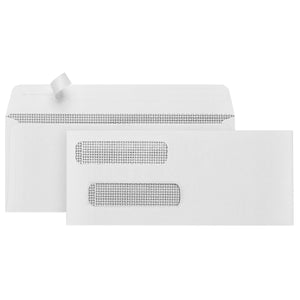Office plants come with a long list of benefits to workers. Plants at work boost the health and productivity of staff, and they make an office environment more welcoming to workers and clients. In this post, we’ll cover the benefits of plants, how to take care of office plants, and how to choose the best plants for various office conditions.
Don’t worry! You don’t need to be a plant expert to have plants in your office. There are plants that like very little sunlight and ones that will thrive if neglected for weeks at a time. 🌱
The Benefits of Plants
Mental Health Benefits
A study by the University of Technology, Sydney, found several benefits to the emotional and mental health of office workers when plants were introduced into their environments. When plants were added to the office environment, participants reported a 58% reduction in depression, a 44% reduction in hostility and anger, a 38% reduction in fatigue, and a 64% reduction in overall negative feelings.
The study shows that just “one plant per workspace can provide a very large lift to staff spirits, and so promote wellbeing and performance.”
Air Quality
Plants absorb the carbon dioxide humans exhale and transform it into oxygen through photosynthesis. They also make the air we breathe cleaner by removing impurities and toxins.
Research suggests that plants are effective natural air purifiers. Many offices rely on air conditioning and are sealed off from outside air so pollutants can collect thanks to dust mites and chemical cleaning products. Plants also add humidity to an office environment, reducing the dryness of the air.
Reduced Noise Levels
Do you have a noisy office? Are you constantly overhearing your co-workers’ conversations or their music? Offices are made up of a lot of hard surfaces and harsh corners, from the floor to the ceiling to the windows, which allows sound to bounce off and linger as an echo.
Plants absorb, diffract, and reflect sound. They change the acoustics of the room by reducing reverberation time—meaning they lessen the echo of loud noises.
The Color Green
The color green has a calming effect. Since green is tied to nature—grass, trees, leaves, forests—it gives many human beings a sense of tranquility. Hence why guests, celebrities, and actors wait in green rooms before they are called to the stage or television program.
Stress and anxiety significantly hinder the cohesion of a workplace. Take every opportunity, no matter how small, to ensure everyone in your office feels comfortable.
Aesthetic Value
Plants add visual appeal to an otherwise bland or boring office. Liven up your office space with greenery or a pop of a different color. If possible, consider flowering plant varieties that match your office decor and business branding.
How to Take Care of Office Plants
Best Soil for Indoor Plants
The best soil for indoor plants does depend on the plant. Cacti and succulents thrive in well-drained soil, a third of which would be composed of sand. Ferns favor soil with high humus content, which can be accomplished by adding shredded bark or leaf mold to the soil.
Gardener’s Supply Company says, “A good indoor potting mix is usually composed of peat moss, vermiculite and perlite.” Don’t get too stressed by the technical words. Most indoor soils are a mix of the above ingredients, so they will work just fine for a wide variety of indoor plants. Before purchasing a plant, research to see if it requires a specific type of soil. Otherwise, look for an indoor potting mix.
You can improve your soil with natural ingredients you’ll find around the office. Leftover coffee or green tea will give your soil a boost. Add the grinds to the soil every once in a while. Just make sure they’ve cooled before you do.

Watering Indoor Plants
Without water, your office plants won’t survive. Even if you have the best intentions to take care of them, when work gets busy, plants get forgotten. Don’t let your office become the place where healthy plants go to die.
Try to delegate plant duties around the office. Consider creating an office schedule to share watering responsibilities across your team. Spreading out plant care will make sure no one person feels they are taking on more than they can handle.
Watch out for vacations, especially in the summer when a lot of people are on holiday. The same is true of the Christmas holidays. If your office is closed, is there an office hero willing to come in and water the plants? Will your plants survive a holiday closure without water? If you know there are long weekends or holidays when no one is in the office, make sure you choose plants that can survive without water for multiple days at a time.
Best Office Desk Plants
Office desk plants should be small and easy to manage. When choosing a desk plant, consider how much light it will need and how often it will need water. You also want to select a plant that won’t grow too fast, so it can continue to fit on your desk. Just because it’s small when you buy it doesn’t mean it will stay that way.
Succulents
Succulents come in all shapes and sizes, which means you can find small to very tiny varieties to fit on your desk. They will survive long weekends and vacations away from the office because they require very little water. Succulents require a lot of natural light, but since they are so small, it’s easy to find a spot for them in direct sunlight.
Miniature African Violet

African violets live in the same indoor conditions as humans, making them office friendly plants. The miniature varieties are small, and they will add a pop of color to any desk. For best results, avoid getting water on the leaves of the plant and remove dead flowers or leaves whenever you see them.Negative: Angry, dangerous, pugnacious, forbidden
Air Plants

Air plants are tiny and remove any possibility of getting soil on your desk. They require some specific care, including a soaking bath once a week, but they are very forgiving. Air plants won’t thrive or grow if they are neglected, but they should stay alive if you forget about them, or are on vacation every now and then.
Best Plants For Offices Without Windows
Let’s face it—sometimes offices don’t have the best natural light. Unfortunately, this is bad news for most plants. But there are some plants that will still thrive in low light conditions.
Spider Plant
Spider plants are extremely low maintenance. They enjoy conditions with partial light or shade, so you don’t need to worry about keeping it close to a window. That being said, you will need to water your spider plant every couple of days. If you go on vacation, ask someone to water your spider plant for you.
Snake Plant
Snake plants, also called mother-in-law's tongue, are versatile and hearty. They love room temperatures and can go days without water, which make them tough plants to kill. This plant is perfect for offices because it doesn’t require a lot of light and can withstand neglect. The only downside is that it will keep growing. You may need to repot your snake plant after a few years to prevent the tough roots from breaking open your pot.
Unique Office Plants
Aloe Plants
Aloe plants have fun spiked arms that will grow out in all directions. They only require water every couple of weeks, and they don’t like to be over-watered. Rephrase: If you’re forgetful or take long vacations, your aloe plant will thrive. Plus, the juicy insides of an aloe leaf can treat a sunburnwhen you return. Aloe is a perfect beginner plant. Even though they do best with sufficient sunlight, they can survive low light conditions and neglectful caregivers.
Bamboo Palm
Bamboo is a symbol of prosperity in Japandue to the plant’s sturdy root structure. Bamboo palm has a unique look and is easy to take care of. The plant is perfect for offices because it only requires water once a week and does well in areas with very little sunlight.
Croton
Crotons come in many different plant varieties. Their colors range from green and white, to bright red, orange, purple, pink, or yellow. Its size and multicolored leaves will make it a visually appealing feature of your office. They require significant sunlight and frequent watering. Over-watering can cause root damage, so check the soil moisture before adding more water. Crotons require a little more care than the average office plant, so they are best for offices that have plant enthusiasts.
More From Blue Summit Supplies
💡 Getting a Grip on Office Supply Inventory Management
💡 The Importance of Time Management and How to Optimize Your Time
Do you love office organization and supplies as much as we do? Follow our office supplies blog for the latest trends, productivity tips, product comparisons, and more.
If you have any questions or want to talk to someone about office supplies, shoot us an email or connect with us on Twitter, Facebook, or Instagram.
 For more informative articles about office supplies, subscribe to our email newsletter!
For more informative articles about office supplies, subscribe to our email newsletter!
Never fear, you won't begin receiving daily sales emails that belong in a spam folder. Instead, we promise a fun weekly roundup of our latest blog posts and great finds from across the web. And if you lose interest, it's always easy to unsubscribe with a single click.
















